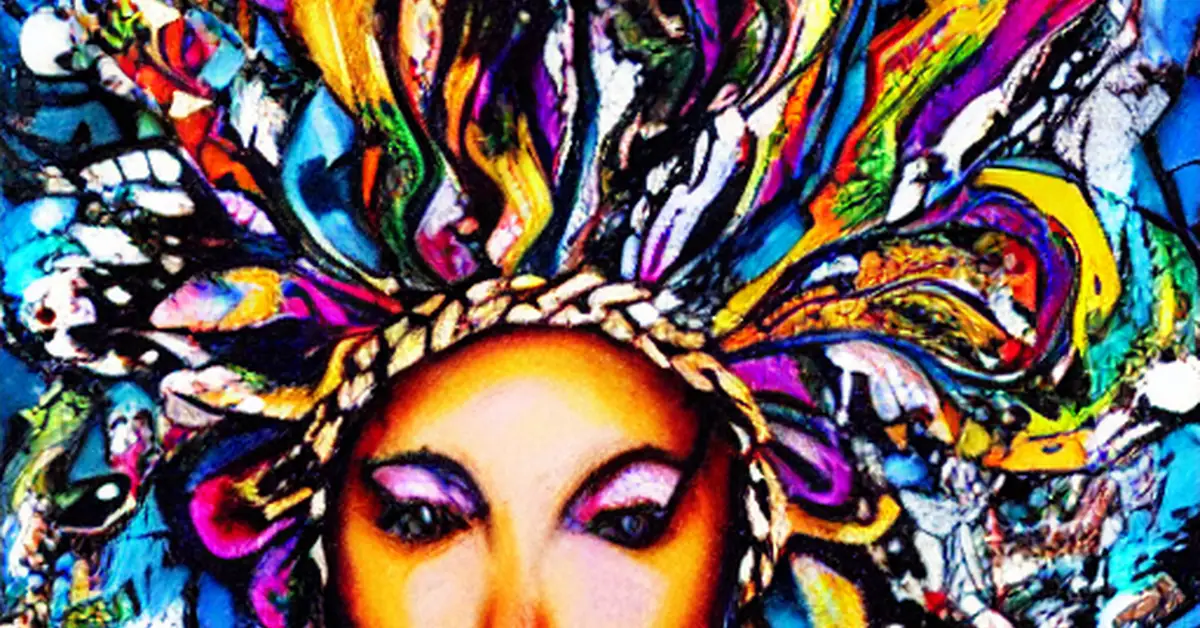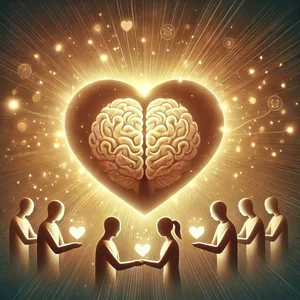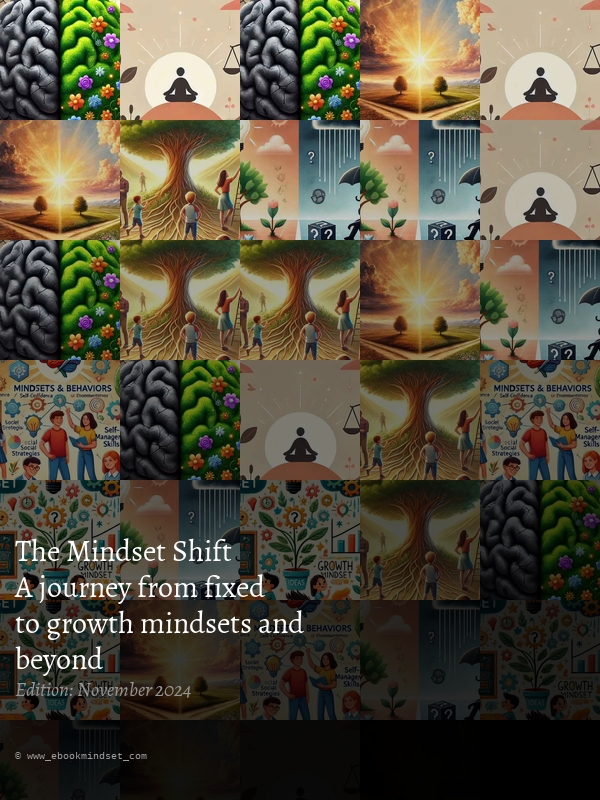Understanding the Artistic Mindset
The concept of an artistic mindset is increasingly recognized as a vital component of creativity, innovation, and personal expression. This mindset transcends traditional notions of artistry, extending its relevance to various fields and everyday life. This article explores what constitutes an artistic mindset, its characteristics, and how it can be cultivated to enhance creativity and problem-solving skills.
What is an Artistic Mindset?
An artistic mindset encompasses a way of thinking that embraces creativity, openness, and exploration. It allows individuals to perceive the world through a lens that values imagination and innovation. This mindset is not limited to artists; it can be adopted by anyone looking to enhance their creative potential. It's about approaching life's challenges and opportunities with a flexible, imaginative, and experimental approach, rather than a rigid, formulaic one. It's about seeing possibilities where others see limitations, and finding beauty and inspiration in unexpected places. This mindset encourages a willingness to experiment, to fail, and to learn from those failures, fostering a continuous cycle of growth and refinement. It's a mindset that celebrates the process of creation as much as the final product, recognizing that the journey itself is a vital part of the artistic experience.
Key Characteristics of an Artistic Mindset
Several key characteristics define an artistic mindset. These traits, while often associated with artists, are valuable assets in any field and can be consciously cultivated:
Openness to Experience
Individuals with an artistic mindset are willing to explore new ideas and experiences without fear of judgment or failure. They see value in experimentation and understand that mistakes can lead to valuable insights. They are not afraid to step outside their comfort zones, to try new things, and to embrace the unknown. This openness allows them to see connections and possibilities that might be missed by those with a more rigid or conventional way of thinking. It's a willingness to be surprised, to be challenged, and to learn from every experience, regardless of whether it's considered a "success" or a "failure."
Curiosity
A strong desire to learn and discover is fundamental to the artistic mindset. This curiosity drives individuals to ask questions, seek new perspectives, and engage with the world around them. It's a constant thirst for knowledge and a relentless pursuit of understanding. This curiosity extends beyond the purely intellectual; it encompasses a deep engagement with the world's sensory experiences, a keen observation of details, and a willingness to explore the nuances of human experience. This inherent inquisitiveness fuels the creative process, leading to new discoveries and innovative solutions.
Resilience
The creative process often involves setbacks and challenges. Those with an artistic mindset demonstrate resilience by persisting in the face of adversity, viewing obstacles as opportunities for growth. They understand that creativity is not a linear process, and that setbacks and failures are inevitable parts of the journey. They don't allow these challenges to discourage them; instead, they use them as learning opportunities, adapting and refining their approach as needed. This resilience is crucial for maintaining motivation and perseverance in the face of difficulties.
Self-Expression
An artistic mindset encourages individuals to express their thoughts, emotions, and unique perspectives authentically. This self-expression is crucial for personal fulfillment and connection with others. It’s not just about creating art in a traditional sense; it's about finding ways to communicate your ideas and experiences in a meaningful way. This could involve writing, painting, music, dance, or any other form of creative expression, but it also includes expressing oneself in everyday interactions, through communication style and personal choices.
Imagination
The ability to envision possibilities beyond the current reality is a hallmark of the artistic mindset. Imagination fuels creativity and innovation, enabling individuals to conceptualize new ideas and solutions. It's the ability to think outside the box, to visualize alternative realities, and to generate novel ideas. This ability to imagine and visualize is essential for generating creative solutions to problems, and for developing innovative approaches to various challenges.
The Importance of an Artistic Mindset
Adopting an artistic mindset can have profound implications for various aspects of life:
Enhanced Creativity
An artistic mindset directly fosters creativity, enabling individuals to generate novel ideas and solutions. It encourages exploration, experimentation, and the willingness to take risks, all of which are crucial for creative breakthroughs. This enhanced creativity extends beyond the arts, impacting problem-solving, innovation, and overall productivity.
Improved Problem-Solving Skills
The artistic mindset's emphasis on flexible thinking, open-mindedness, and imaginative problem-solving allows individuals to approach challenges from multiple angles. It enables them to see connections and patterns that might be missed by those with a more rigid or linear way of thinking. This leads to more effective and innovative solutions to complex problems.
Increased Emotional Intelligence
The focus on self-expression and emotional awareness inherent in an artistic mindset contributes to a higher level of emotional intelligence. Individuals are better able to understand and manage their own emotions, and to empathize with the emotions of others. This enhanced emotional intelligence leads to stronger relationships and improved communication skills.
Personal Growth
The continuous learning, self-reflection, and experimentation encouraged by an artistic mindset leads to significant personal growth. Individuals become more self-aware, resilient, and adaptable, fostering a greater sense of self-understanding and fulfillment.
Cultivating an Artistic Mindset
Developing an artistic mindset involves intentional practice and a willingness to embrace change. Here are several strategies to cultivate this mindset:
Embrace Failure
Understanding that failure is a natural part of the creative process can help reduce the fear associated with taking risks. Reflect on past failures as learning experiences rather than setbacks. Instead of viewing failures as indicators of inadequacy, reframe them as valuable opportunities for growth and learning. Analyze what went wrong, identify areas for improvement, and use this knowledge to inform future endeavors.
Practice Mindfulness
Mindfulness techniques can enhance awareness of thoughts and feelings, allowing individuals to recognize when they are in a fixed or negative mindset. Techniques such as meditation or journaling can promote reflection and self-awareness. By paying attention to your thoughts and emotions without judgment, you can identify and challenge negative thought patterns that may be hindering your creativity. This heightened self-awareness allows for more conscious control over your mindset, fostering a more positive and creative outlook.
Engage in Creative Activities
Participating in various forms of creative expression—whether painting, writing, dancing, or playing music—can help strengthen the artistic mindset. These activities encourage exploration and self-expression. Don't worry about creating masterpieces; the goal is to engage in the process, to experiment, and to discover what you enjoy. Even simple activities like coloring, sketching, or writing in a journal can contribute to cultivating an artistic mindset.
Surround Yourself with Creativity
Engaging with other creative individuals can inspire new ideas and perspectives. Attend workshops, join art groups, or collaborate on projects to foster a sense of community. Exposure to diverse perspectives and creative approaches can broaden your own thinking and inspire new ideas. Sharing your work with others and receiving feedback can also help you to develop your skills and gain confidence.
Challenge Conventional Thinking
Encourage yourself to think outside traditional boundaries by questioning assumptions and exploring alternative viewpoints. This practice can lead to innovative solutions in both personal and professional contexts. Actively seek out diverse perspectives, challenge your own assumptions, and be open to unconventional ideas. This willingness to question the status quo is essential for fostering innovation and breaking through creative blocks.
The Role of Artistic Intelligence (AQ)
Artistic Intelligence (AQ) refers to the ability to navigate one's mental landscape while creating art or engaging in creative processes. It involves three key skills:
Artistic Mindset Awareness
This involves recognizing and understanding your own artistic mindset – identifying your strengths, weaknesses, and tendencies in creative situations. This self-awareness is crucial for effectively managing your creative process and maximizing your potential.
Artistic Mindset Identification
This skill focuses on identifying the artistic mindsets of others, understanding how they approach creative problems, and adapting your approach accordingly. Being able to recognize different creative styles and approaches allows for more effective collaboration and understanding in creative contexts.
Artistic Mindset Management
This involves effectively managing your own artistic mindset, particularly during challenging or frustrating creative moments. This includes techniques for overcoming creative blocks, managing negative emotions, and maintaining a positive and productive creative environment.
By enhancing AQ, individuals can better manage their thoughts and emotions during creative endeavors, leading to more fulfilling artistic experiences.
Overcoming Mental Barriers
Mental barriers such as perfectionism, procrastination, and fear of judgment often hinder creativity. Understanding these obstacles is crucial for developing an artistic mindset:
Perfectionism
Striving for perfection can paralyze creativity. Emphasizing progress over perfection allows for more freedom in expression. Perfectionism often stems from a fear of failure and a need for external validation. By shifting your focus from achieving unattainable perfection to celebrating progress and learning from mistakes, you can free yourself from this paralyzing barrier.
Procrastination
Breaking tasks into smaller steps can make creative projects feel less daunting. Procrastination is often a response to feeling overwhelmed or intimidated by a large task. By breaking down projects into smaller, more manageable steps, you can make the process less daunting and more achievable. This approach also allows for regular feedback and adjustments along the way, enhancing the creative process.
Fear of Judgment
Reminding oneself that art is subjective can alleviate the pressure associated with external opinions. The fear of judgment is a common barrier for many creatives. Remembering that art is subjective and that different people will have different reactions to your work can help reduce the pressure to conform to external expectations. Focusing on your own personal expression and the creative process itself can also help alleviate this fear.
The Impact of Environment on Artistic Mindset
The environment plays a significant role in shaping one's artistic mindset. A supportive atmosphere that encourages exploration and experimentation fosters creativity:
Physical Space
Creating a dedicated space for artistic activities can enhance focus and inspiration. Having a designated space free from distractions allows for greater concentration and immersion in creative tasks. This dedicated space can be a physical room, a corner of a room, or even a specific outdoor location.
Social Support
Surrounding oneself with encouraging peers can boost confidence and motivation. A supportive social environment can provide encouragement, inspiration, and constructive feedback, leading to increased confidence and motivation. This support network can act as a source of inspiration, motivation, and emotional resilience during challenging creative periods.
Access to Resources
Providing access to materials, tools, and educational resources enables individuals to explore their creativity fully. Having access to necessary resources removes a significant barrier for many aspiring artists. This access enables exploration, experimentation, and the realization of creative visions, leading to greater self-expression and fulfillment.
Conclusion
The artistic mindset is a powerful tool that transcends traditional boundaries of art and creativity. By embracing openness, curiosity, resilience, self-expression, and imagination, individuals can unlock their full potential for innovation and personal growth. Cultivating this mindset requires intentional practice but offers significant rewards in both personal fulfillment and professional success. In today's rapidly changing world, adopting an artistic mindset may be one of the most valuable skills one can develop—enabling individuals not only to navigate challenges effectively but also to thrive creatively across various domains of life. It is a mindset that promotes continuous learning, adaptability, and a lifelong pursuit of creative expression, leading to greater personal fulfillment and a more enriching life experience.




